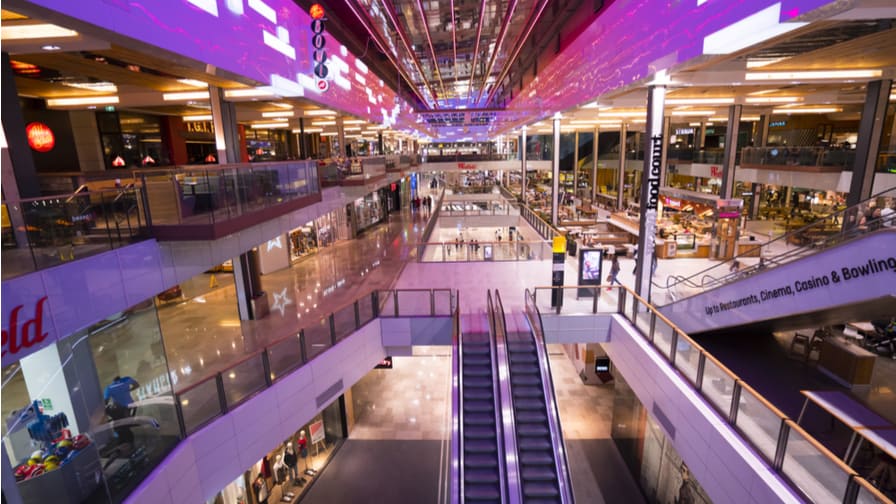Brits love internet shopping, especially on mobile. In fact, with 72% of the population shopping online regularly, they’re 20% more likely to shop via digital channels than all consumers in the entire European region.
While this is good news for pure-play digital giants such as Amazon and eBay, it presents a significant challenge for bricks and mortar retail brands. Keeping traditional shopping relevant and enticing consumers into physical stores is increasingly difficult.
To address this, many retailers are embracing technologies, such as geofencing, to capture consumer attention online and then lure them offline. For example, major shopping centre operators like Westfield are now using the tool as a means to boost footfall by offering consumers near to stores personalised experiences with real-time resonance, replicating the digital experience offline.
But, by only reaching consumers when they are in close proximity, is geofencing enough to reinforce the relevance of offline stores?
A brief guide to geofencing
Before we assess the efficacy of geofencing, it’s crucial to define how it works. Essentially, the technology uses GPS or RFID (radio-frequency identification) to create a virtual boundary around locations so that specific responses can be triggered when a mobile device enters the area. For retail brands, its key application is detecting when consumers are near to stores, enabling them to send tailored mobile messages, such as promotional push notifications or texts.
Is geofencing the magic bullet?
The appeal of geofencing for shopping centres such as Westfield — which draws 75 million visitors each year — is clear. In principle, it provides the opportunity to engage this huge audience as they pass its busy London locations, bridging the gap between online and offline shopping. But in practice, there are several limitations.
Firstly, messages cannot be delivered unless consumers have opted into advertising. On the one hand, this can be a powerful relationship-building tool; in return for consent, consumers receive valuable offers. But on the other, there is a risk that consumers worried about online privacy may refuse to grant access — and with the new General Data Protection Regulation (GDPR) increasing data usage awareness, this could be a significant number of shoppers.
This brings us to the second drawback: reach. To maximise targeting precision, geofencing areas are generally set at short distances; so even if all proximate consumers have opted in, only a small portion will receive messages. Moreover, just because a consumer is close to a store, doesn’t mean they want to shop there. By focusing on consumers solely as nearby prospects, geofencing fails to take into account their individual needs, interests, and where they are in their unique journey, which means messages risk being irrelevant and ill-timed.
Finally, there’s accuracy. The ability of geofencing to define location is mixed; some tools can detect a smartphone within 300 feet, others to 15 feet. Indeed, in rural areas, the weaker signal can make for still higher variations. As a result, targeting precision is variable.
How can these disadvantages be mitigated?
The short answer is that physical retailers and brands must gain an all-encompassing view of individual paths to purchase that enables them to identify when and how messages should be served to drive engagement, footfall, and sales.
The long answer requires a more detailed explanation, which can be broadly divided into two key parts:
1. Consider the whole shopping experience
The modern consumer purchase path is not fixed; it flows across devices and touchpoints however the shopper chooses and in a manner that suits their individual needs, not those of the seller. This means retailers and brands must measure consumer journeys as they switch between online and offline; tracking all interactions to build a complete picture of their activity, what they want, and how they prefer to connect with brands.
For instance, although metrics such as click-through rates (CTRs) don’t translate into the real world, they can be used to trace how individuals respond to digital ads. Using this insight, conversations can be started with consumers on their preferred medium and at the ideal moment, as well as adjusting in-store mobile messages for enhanced relevance.
In addition, marketers must consider that consumers in the proximity of a store won’t necessarily be planning to enter it. It is only by identifying potential customers before they begin their offline journey – using neighbourhood insights and interest data – and using techniques that prompt them to travel to a nearby shop, that retailers and brands can ensure they are targeting the right people with the right messaging to boost sales.
2. Layer data to understand consumers as people
Identifying the ideal place, time and message type is a good start, but maximum engagement depends on one more core insight: who consumers are.
To achieve this, retailers and brands need to blend information about where consumers are in relation to stores with an in-depth neighbourhood and interest data covering a multitude of factors; such as household income, demographic data, omnichannel shopping, and purchase intent. When combined, these data points can then be used to create anonymous yet granular consumer profiles that determine where consumers live, where they shop, and how they interact with brands. This insight goes far beyond the basics of cookie-based and geofencing data, and forms the ideal basis for personalised messaging no matter where consumers may be.
And that’s not all. It can also be leveraged to build precise audience segments grouped by neighbourhood characteristics — such as age, income, ethnicity — and serve messages for appropriate products that meet individual requirements and enhance in-store purchases.
So, while geofencing is by no means without merit, it certainly isn’t the magic bullet to keeping offline retail afloat. If retail companies want to keep footfall flowing, they must take an omnichannel perspective. Only by understanding the shopping experience as one interwoven journey, and prompting store visits before a consumer has left their home, can offline brands and retailers remain relevant for modern shoppers.

